Exercise 1
I. Read the following unfinished statements or questions carefully. For each
unfinished statement or question four suggested answers marked A, B, C and
D are given. Choose the one you think best completes the statements or
answers the question.
1. The United Kingdom is located in ____.
A. northern Europe B. western Europe
C. northwestern Europe D. southeastern Europe
2. The two large islands that make up the British Isles are ____.
A. Scotland and Ireland
B. Britain and Scotland
C. Great Britain and Northern Ireland
D. Great Britain and Ireland
3. The British Empire was replaced by the British Commonwealth or the
Commonwealth of Nations in ____.
A. 1921 B. 1931
C. 1945 D. 1950
4. The Commonwealth of Nations is an association of independent countries
____.
A. that were once colonies of Britain
B. that have a large number of British immigrants
C. that have close relations with Britain
D. that have fought on the side of Britain in the two world wars
5. The English Channel separates the island of Great Britain from ____.
A. Denmark B. Belgium
C. France D. the Netherlands
6. England has three main land regions. They are the Southwestern Plateau,
the Pennines, and ___.
A. the Eastern Plain B. the Highland
C. the Central Lowlands D. the Southern Uplands
7. Scotland occupies the ____ third of the island of Great Britain in the
British Isles.
A. southern B. northern
C. eastern D. western
8. Northern Ireland, which takes up the northern fifth of Ireland, is a
fourth political division of ____.
A. the United Kingdom B. Ireland
C. Scotland D. Wales
9. Britain’s longest rivers are ____.
A. the Severn and the Clyde B. the Thames and the Clyde
C. the Clyde and the Humber D. the Severn and the Thames
10. The largest lake in the British Isles is ____.
A. Loch Lomond B. Loch Neagh
C. Windermere D. Ullswater
11. Britain’s climate is influenced by____, a warm ocean current that passes
the western coast of the British Isles and warms them.
A. the North Atlantic Drift B. the Brazil Current
C. the Labrador Current D. the Falkland Current
12. The English people and the English language were born from the union
of ____.
A. the Angles and the Saxons
B. Germanic conquerors and the Norman French
C. Danes or Vikings and the Norman French
D. Norman conquerors and the defeated Anglo-Saxons
13. Generally speaking the English southerners speak the type of English
closer to ____.
A. the Cockney B. the Queen’s English
C. the Gaelic D. the BBC English
14. Although Wales has been united with England for more than 400 years, the
Welsh has kept alive ____.
A. their own language B. their own literature
C. their own tradition D. All of the above
15. The Eisteddfod is a(n) ____ festival of poetry, music and other arts.
A. English B. Scottish
C. Welsh D. Irish
16. Nowadays the Gaelic language, which is an ancient____, is still heard in
the Highlands and the Western Isles.
A. Scottish language B. English language
C. Irish language D. Celtic language
17. Many Scottish names begin with M’, Mc or Mac, which means__
A. father of B. sun of
C. son of D. some of
18. In Northern Ireland ____ make up the dominant group.
A. Roman Catholics B. English Protestants
C. non-religious people D. Jewish people
19. Northern Ireland is small, but it is significant because of the__
A. the economic problems B. the political troubles
C. the immigration issues D. the national identity
20. About three million people have migrated to Britain since World War ll.
They are mainly from the West Indies, India and____.
A. Indonesia B. Singapore
C. Hong Kong D. Pakistan
I. Read the following unfinished statements or questions carefully. For each
unfinished statement or question four suggested answers marked A, B, C and
D are given. Choose the one you think best completes the statements or
answers the question.
1. The United Kingdom is located in ____.
A. northern Europe B. western Europe
C. northwestern Europe D. southeastern Europe
2. The two large islands that make up the British Isles are ____.
A. Scotland and Ireland
B. Britain and Scotland
C. Great Britain and Northern Ireland
D. Great Britain and Ireland
3. The British Empire was replaced by the British Commonwealth or the
Commonwealth of Nations in ____.
A. 1921 B. 1931
C. 1945 D. 1950
4. The Commonwealth of Nations is an association of independent countries
____.
A. that were once colonies of Britain
B. that have a large number of British immigrants
C. that have close relations with Britain
D. that have fought on the side of Britain in the two world wars
5. The English Channel separates the island of Great Britain from ____.
A. Denmark B. Belgium
C. France D. the Netherlands
6. England has three main land regions. They are the Southwestern Plateau,
the Pennines, and ___.
A. the Eastern Plain B. the Highland
C. the Central Lowlands D. the Southern Uplands
7. Scotland occupies the ____ third of the island of Great Britain in the
British Isles.
A. southern B. northern
C. eastern D. western
8. Northern Ireland, which takes up the northern fifth of Ireland, is a
fourth political division of ____.
A. the United Kingdom B. Ireland
C. Scotland D. Wales
9. Britain’s longest rivers are ____.
A. the Severn and the Clyde B. the Thames and the Clyde
C. the Clyde and the Humber D. the Severn and the Thames
10. The largest lake in the British Isles is ____.
A. Loch Lomond B. Loch Neagh
C. Windermere D. Ullswater
11. Britain’s climate is influenced by____, a warm ocean current that passes
the western coast of the British Isles and warms them.
A. the North Atlantic Drift B. the Brazil Current
C. the Labrador Current D. the Falkland Current
12. The English people and the English language were born from the union
of ____.
A. the Angles and the Saxons
B. Germanic conquerors and the Norman French
C. Danes or Vikings and the Norman French
D. Norman conquerors and the defeated Anglo-Saxons
13. Generally speaking the English southerners speak the type of English
closer to ____.
A. the Cockney B. the Queen’s English
C. the Gaelic D. the BBC English
14. Although Wales has been united with England for more than 400 years, the
Welsh has kept alive ____.
A. their own language B. their own literature
C. their own tradition D. All of the above
15. The Eisteddfod is a(n) ____ festival of poetry, music and other arts.
A. English B. Scottish
C. Welsh D. Irish
16. Nowadays the Gaelic language, which is an ancient____, is still heard in
the Highlands and the Western Isles.
A. Scottish language B. English language
C. Irish language D. Celtic language
17. Many Scottish names begin with M’, Mc or Mac, which means__
A. father of B. sun of
C. son of D. some of
18. In Northern Ireland ____ make up the dominant group.
A. Roman Catholics B. English Protestants
C. non-religious people D. Jewish people
19. Northern Ireland is small, but it is significant because of the__
A. the economic problems B. the political troubles
C. the immigration issues D. the national identity
20. About three million people have migrated to Britain since World War ll.
They are mainly from the West Indies, India and____.
A. Indonesia B. Singapore
C. Hong Kong D. Pakistan
key 1.C 2.D 3.B 4.A 5.C 6.A 7.B 8.A 9.D 10.B 1l.A 12.D 13.D l4.D 15.C 16.D 17.C 18.B 19.B 20.D
Exercises 2
I. Read the following unfinished statements or questions carefully. For each
unfinished statement or question four suggested answers marked A, B, C and
D are given. Choose the one you think best completes the statements or
answers the question.
unfinished statement or question four suggested answers marked A, B, C and
D are given. Choose the one you think best completes the statements or
answers the question.
1. The first known settlers of Britain were the ____.
A. Celts B. Iberians
C. Beaker Folk D. Romans
2. The Celts' religion was ____.
A. Buddhism B. Islam
C. Druidism D. Christianity
3. Roman control was only effective in ____.
A. Scotland B. Wales
C. London D. The southeast of Britain
4. Christianity was first brought to England by the ____.
A. Romans B. Celts
C. Anglo-Saxons D. Danes
5. The Romans remained in control of Britain for nearly 400 years and they
pulled out in ____.
A. 306 AD B. 410 AD
C. 446 AD D. 1066 AD
6. Which of the following tribes came to Britain first?
A. The Angles. B. The Saxons.
C. The Gaels. D. The Jutes.
7. ____ became the first real king of England, though he did not assume that
style.
A. Offa B. Egbert
C. Vortigern D. Hengist
A. Celts B. Iberians
C. Beaker Folk D. Romans
2. The Celts' religion was ____.
A. Buddhism B. Islam
C. Druidism D. Christianity
3. Roman control was only effective in ____.
A. Scotland B. Wales
C. London D. The southeast of Britain
4. Christianity was first brought to England by the ____.
A. Romans B. Celts
C. Anglo-Saxons D. Danes
5. The Romans remained in control of Britain for nearly 400 years and they
pulled out in ____.
A. 306 AD B. 410 AD
C. 446 AD D. 1066 AD
6. Which of the following tribes came to Britain first?
A. The Angles. B. The Saxons.
C. The Gaels. D. The Jutes.
7. ____ became the first real king of England, though he did not assume that
style.
A. Offa B. Egbert
C. Vortigern D. Hengist
8. ____ became the first Archbishop of Canterbury.
A. Columba B. Ethelbert
C. St. Augustine D. Egbert
9. The Vikings began to attack various parts of England from the end of the
____century.
A. 7th B. 8th
C. 9th D.10th
10. Who were the ancestors of the English and the founders of England?
A. The Anglo-Saxons. B. The Normans.
C. The Vikings. D. The Romans
11. Which of the following statements is NOT true?
A. Alfred the Great started the English navy.
B. Alfred the Great reorganized the Saxon any, making it more efficient.
C. Alfred the Great established schools and formulated a legal System.
D. Alfred the Great impose a tax, called the Danegeld, on the Saxons.
12. Which of the following statements is NOT true?
A. Canute was chosen by the Witan as king of England.
B. Canute was a warrior king and fought many battles against the Normans.
C. Canute divided power between Danes and Saxons.
D. Canute forced Malcolm II, king of the Scots, to recognize him as overlord.
13. Which of the following is NOT true?
A. Edward the Confessor was more French than English.
B. Edward the Confessor filled his court with 'foreign' favorites.
C. Edward the Confessor was on very good terms with his father-in-law, Earl Godwin. D. Edward the Confessor appointed a Norman priest Archbishop of Canterbury.
14. When Edward the Confessor died, ____was chosen by the Witan as king Of England. A. the king of Norway
B. Harold Godwinson, Earl of Wessex
C. Edgar, Edward's nephew
D. Tostig, the deposed Earl of Northumbria
15. Tostig, Harold's brother, joined____, and made an attempt to recover his lost earldom of Northumbria.
A. Harold Hardrada, King of Norway
B. Edgar, Edward's nephew
C. Malcolm II, King of the Scots
D. Hardicanute
16. William, Duke of Normandy, fought King Harold of England at the Battle of Hastings in____.
A. 1086 B. 1066
C. 1035 D. 1381
17. William won the Battle of Hastings. Later, on____, he was crowned king of England. A. Easter Day B. St. Andrew's Day
C. Christmas Day D. Boxing Day
18. William, Duke of Normandy, is now known as____.
A. William the Confessor B. William Lion-Heart
C. the father of the British navy D. William the Conqueror
19. Most of the land belonging to the Saxons was confiscated by William and given to__ __.
A. the Norman barons B. the Danes
C. the Irish D. the Scots
20. The Norman Conquest is perhaps ____event in English history.
A. a trifling B. the best-known
C. a horrifying D. a sensational
A. Columba B. Ethelbert
C. St. Augustine D. Egbert
9. The Vikings began to attack various parts of England from the end of the
____century.
A. 7th B. 8th
C. 9th D.10th
10. Who were the ancestors of the English and the founders of England?
A. The Anglo-Saxons. B. The Normans.
C. The Vikings. D. The Romans
11. Which of the following statements is NOT true?
A. Alfred the Great started the English navy.
B. Alfred the Great reorganized the Saxon any, making it more efficient.
C. Alfred the Great established schools and formulated a legal System.
D. Alfred the Great impose a tax, called the Danegeld, on the Saxons.
12. Which of the following statements is NOT true?
A. Canute was chosen by the Witan as king of England.
B. Canute was a warrior king and fought many battles against the Normans.
C. Canute divided power between Danes and Saxons.
D. Canute forced Malcolm II, king of the Scots, to recognize him as overlord.
13. Which of the following is NOT true?
A. Edward the Confessor was more French than English.
B. Edward the Confessor filled his court with 'foreign' favorites.
C. Edward the Confessor was on very good terms with his father-in-law, Earl Godwin. D. Edward the Confessor appointed a Norman priest Archbishop of Canterbury.
14. When Edward the Confessor died, ____was chosen by the Witan as king Of England. A. the king of Norway
B. Harold Godwinson, Earl of Wessex
C. Edgar, Edward's nephew
D. Tostig, the deposed Earl of Northumbria
15. Tostig, Harold's brother, joined____, and made an attempt to recover his lost earldom of Northumbria.
A. Harold Hardrada, King of Norway
B. Edgar, Edward's nephew
C. Malcolm II, King of the Scots
D. Hardicanute
16. William, Duke of Normandy, fought King Harold of England at the Battle of Hastings in____.
A. 1086 B. 1066
C. 1035 D. 1381
17. William won the Battle of Hastings. Later, on____, he was crowned king of England. A. Easter Day B. St. Andrew's Day
C. Christmas Day D. Boxing Day
18. William, Duke of Normandy, is now known as____.
A. William the Confessor B. William Lion-Heart
C. the father of the British navy D. William the Conqueror
19. Most of the land belonging to the Saxons was confiscated by William and given to__ __.
A. the Norman barons B. the Danes
C. the Irish D. the Scots
20. The Norman Conquest is perhaps ____event in English history.
A. a trifling B. the best-known
C. a horrifying D. a sensational
1. B 2. C 3. D 4. A 5. B 6. C 7. B 8. C 9. B l0. A
11. D 12. B l3. C l4. B l5. A 16. B 17. C l8. D 19. A 20. B
11. D 12. B l3. C l4. B l5. A 16. B 17. C l8. D 19. A 20. B
Exercises 3
I. Read the following unfinished statements or questions carefully. For each unfinished stat-ement or question four suggested answers marked A, B, C and D are given. Choose the one you think best completes the statements or answers the question.
1. In the reign of William I, the ____were at the bottom of the feudal scale.
A. knights B. villeins
C. lesser nobles D. freemen
2. The Domesday Book was completed in____.
A. 1086 B. 1085
C. 1087 D. 1006
3. When William I died in Normandy in ____he left England to his second son
William.
A. 1100 B. 1153
C. 1087 D. 1135
4. William II was known as William Rufus because of his____
A. independence B. efficiency
C. filial piety D. red complexion
5. ____ was the founder of the Plantagenet dynasty and ruled England for 35
years.
A. Henry I B. King Stephen
C. Henry II D. Count of Anjou
6. William Rufus (William II) was killed by an arrow when he was hunting in____ in
August l100.
A. the New Forest B. Pevensey
C. Winchester D. Gloucester
7. Henry II took some measures to bring the disorders of ____reign to an end.
A. Henry I's B. King Stephen's
C. William II's D. Edward the Confessor's
8. Which of the following statements is NOT true?
A. Henry II did some renovations of castles built in Stephen's time.
B. Henry II recalled grants of Royal lands made by Stephen.
C. Henry II strengthened the powers of his sheriffs.
D. Henry II relied for armed support upon a militia made up of English
Freemen.
9. Henry II divided the country into ____circuits and appointed traveling
judges to each of them.
A. three B. four
C. five D. six
10. Which of the following statements is NOT true?
A. The Bishop's courts could punish by means of censure.
B. The Bishop's courts could inflict corporal punishment.
C. The Bishop's courts could punish by means of excommunication.
D. The Bishop's courts could punish by mean of penance.
11. After Thomas Becket rejected the Constitutions of Clarendon Henry II____.
A. appointed him Chancellor of England
B. made him Archbishop of Canterbury
C. drove him into exile
D. increased the Jurisdiction of the church courts
12. Thomas Becket spent ____years on the continent and returned to England in
1l70.
A. four B. five
C. six D. seven
13. The Great Charter (or Magna Carta) was signed by King John at Runnymede
in____.
A. 1162 B. 1164
C. 1210 D. 1215
14. Simon de Montfort summoned in____ the Great Council to meet at
Westminster, together with two knights from each county and two citizens
from each town.
A. 1242 B. 1258
C. 1265 D. 1266
15. Which of the following statements is NOT true?
A. In the 13th century a Black Rod went between the two Houses of
Parliament for liaison and to discipline the members.
B. In the 13th century Parliament only met by royal invitation.
C. In the 13th century Parliament's role was to offer advice, not to make decisions.
D. In the 13th century the most important part of Parliament was the House of Lords.
16. During the reign of ____, Wales was brought under English rule.
A. Henry III B. Edward I
C. Edward II D. Edward III
17. ____ became the first prince to hold the title of Prince of Wales, which
continues to be borne by the eldest son of the reigning monarch.
A. Richard I B. Henry III
C. Edward II D. Edward III
18. The chief demand of the peasants during the Peasant Uprising of 1381 was____.
A. the abolition of villeinage
B. the punishment of the King's ministers
C. the increase of wages
D. the reform of the church
19. Wat Tyler was killed by William Walworth, ____.
A. Archbishop of York B. Mayor of London
C. Archbishop of Canterbury D. the Treasurer
20. The Peasant Uprising of 1381 did not direct against____.
A. the rich clergy B. the lawyers
C. the landowners D. the town traders
1. B 2. A 3.C 4. D 5. C 6. A 7. B 8. A 9. D l0. B
11. C l2. C 13. D l4. C 15. A 16. B 17. C 18. A l9. B 20. D
Exercises 4
A. knights B. villeins
C. lesser nobles D. freemen
2. The Domesday Book was completed in____.
A. 1086 B. 1085
C. 1087 D. 1006
3. When William I died in Normandy in ____he left England to his second son
William.
A. 1100 B. 1153
C. 1087 D. 1135
4. William II was known as William Rufus because of his____
A. independence B. efficiency
C. filial piety D. red complexion
5. ____ was the founder of the Plantagenet dynasty and ruled England for 35
years.
A. Henry I B. King Stephen
C. Henry II D. Count of Anjou
6. William Rufus (William II) was killed by an arrow when he was hunting in____ in
August l100.
A. the New Forest B. Pevensey
C. Winchester D. Gloucester
7. Henry II took some measures to bring the disorders of ____reign to an end.
A. Henry I's B. King Stephen's
C. William II's D. Edward the Confessor's
8. Which of the following statements is NOT true?
A. Henry II did some renovations of castles built in Stephen's time.
B. Henry II recalled grants of Royal lands made by Stephen.
C. Henry II strengthened the powers of his sheriffs.
D. Henry II relied for armed support upon a militia made up of English
Freemen.
9. Henry II divided the country into ____circuits and appointed traveling
judges to each of them.
A. three B. four
C. five D. six
10. Which of the following statements is NOT true?
A. The Bishop's courts could punish by means of censure.
B. The Bishop's courts could inflict corporal punishment.
C. The Bishop's courts could punish by means of excommunication.
D. The Bishop's courts could punish by mean of penance.
11. After Thomas Becket rejected the Constitutions of Clarendon Henry II____.
A. appointed him Chancellor of England
B. made him Archbishop of Canterbury
C. drove him into exile
D. increased the Jurisdiction of the church courts
12. Thomas Becket spent ____years on the continent and returned to England in
1l70.
A. four B. five
C. six D. seven
13. The Great Charter (or Magna Carta) was signed by King John at Runnymede
in____.
A. 1162 B. 1164
C. 1210 D. 1215
14. Simon de Montfort summoned in____ the Great Council to meet at
Westminster, together with two knights from each county and two citizens
from each town.
A. 1242 B. 1258
C. 1265 D. 1266
15. Which of the following statements is NOT true?
A. In the 13th century a Black Rod went between the two Houses of
Parliament for liaison and to discipline the members.
B. In the 13th century Parliament only met by royal invitation.
C. In the 13th century Parliament's role was to offer advice, not to make decisions.
D. In the 13th century the most important part of Parliament was the House of Lords.
16. During the reign of ____, Wales was brought under English rule.
A. Henry III B. Edward I
C. Edward II D. Edward III
17. ____ became the first prince to hold the title of Prince of Wales, which
continues to be borne by the eldest son of the reigning monarch.
A. Richard I B. Henry III
C. Edward II D. Edward III
18. The chief demand of the peasants during the Peasant Uprising of 1381 was____.
A. the abolition of villeinage
B. the punishment of the King's ministers
C. the increase of wages
D. the reform of the church
19. Wat Tyler was killed by William Walworth, ____.
A. Archbishop of York B. Mayor of London
C. Archbishop of Canterbury D. the Treasurer
20. The Peasant Uprising of 1381 did not direct against____.
A. the rich clergy B. the lawyers
C. the landowners D. the town traders
1. B 2. A 3.C 4. D 5. C 6. A 7. B 8. A 9. D l0. B
11. C l2. C 13. D l4. C 15. A 16. B 17. C 18. A l9. B 20. D
Exercises 4
I. Read the following unfinished statements or questions carefully. For each
unfinished statement or question four suggested answers marked A, B, C and
D are given. Choose the one you think best completes the statements or
answers the question.
unfinished statement or question four suggested answers marked A, B, C and
D are given. Choose the one you think best completes the statements or
answers the question.
1.The name of Wars of the Roses was, in fact, coined by the great 19th
century novelist ____.
A. Charles Dickens B. George Elliot
C. Sir Walter Scott D. Charlotte Bronte
2. Although the Wars of the Roses were fought intermittently for ____ years,
ordinary people were little affected and went about their business as usual.
A. 20 B. 30
C. 40 D. 50
3. No less than____ nobles of royal blood were killed in the Wars of the Roses.
A. 80 B. 90
C. 100 D. 110
4. Which of the following statements is NOT true?
A. Henry VII refilled the royal treasury through loans, subsidies, property levies and
fines.
B. Henry VII forbade the nobles to keep excessive power.
C. Henry VII built up England's navy and foreign trade.
D. Henry VII completely neglected parliament as though it never existed.
5. Henry VIII declared himself Supreme Head of the Church of England in ____.
A. 1529 B. 1534
C. 1535 D. 1547
6. Queen Mary burnt at stake some ____men and women who refused to change
back to the Catholic faith.
A. 300 B. 350 C. 400 D. 450
century novelist ____.
A. Charles Dickens B. George Elliot
C. Sir Walter Scott D. Charlotte Bronte
2. Although the Wars of the Roses were fought intermittently for ____ years,
ordinary people were little affected and went about their business as usual.
A. 20 B. 30
C. 40 D. 50
3. No less than____ nobles of royal blood were killed in the Wars of the Roses.
A. 80 B. 90
C. 100 D. 110
4. Which of the following statements is NOT true?
A. Henry VII refilled the royal treasury through loans, subsidies, property levies and
fines.
B. Henry VII forbade the nobles to keep excessive power.
C. Henry VII built up England's navy and foreign trade.
D. Henry VII completely neglected parliament as though it never existed.
5. Henry VIII declared himself Supreme Head of the Church of England in ____.
A. 1529 B. 1534
C. 1535 D. 1547
6. Queen Mary burnt at stake some ____men and women who refused to change
back to the Catholic faith.
A. 300 B. 350 C. 400 D. 450
7. Mary died childless and her half-sister Elizabeth came to the throne as
Elizabeth I in ____.
A. 1547 B. 1558
C. 1588 D. 1603
8. Which of the following statements is NOT true?
A. Elizabeth I broke Mary's ties with Rome.
B. Elizabeth I restored her father's independent Church of England.
C. Elizabeth I's religious reform was a compromise of views.
D. Elizabeth I's religious settlement was acceptable to both extreme Protestants and
ardent Catholics.
9. The Renaissance began in northern Italy in the early ____century, and was
typified by the universal genius of Leonardo Da Vinci.
A. 11th B. 12th
C. 13th D. 14th
10. The English Renaissance is said to have begun in ____.
A. 1422 B. 1478
C. 1485 D. 1495
11. James VI of Scotland succeeded Elizabeth I and became James I of England
in ____.
A. 1601 B. 1603
C. 1615 D. 1625
12. Which of the following statements is NOT true?
A. The Puritans believed that the Reformation had gone too far.
B. The Puritans became very powerful in Parliament.
C. The Puritans were very happy when they heard that James had become king of
England.
D. The Puritans called for a purer form of worship.
13. The Puritans suspected James I of England being a secret ____because of
his pro-Spanish foreign policy and his son's Spanish marriage alliance.
A. Buddhist B. Catholic
C. Protestant D. Muslim
14. In ____ a small group of Puritans sailed from Plymouth in the Mayflower,
and found New Plymouth in America, Britain's first settlement in the New
World.
A. 1614 B. 1615
C. 1620 D. 1621
15. The Great Civil War, as it became known, lasted from ____ until 1646.
A. 1639 B. 1640
C. 1641 D. 1642
16. When the First Civil War broke out ____men were at Charles I's command.
A. 1,000 B. 2,000
C. 3,000 D. 4,000
17. Which of the following statements is NOT true?
A. Oliver Cromwell became Lord Protector of the Commonwealth of England in 1653 by the Petition of Right.
B. Oliver Cromwell crushed without mercy a rebellion in Ireland.
C. Oliver Cromwell suppressed the Levellers, a group within his own army who
advocated total religious and social equality.
D. Oliver Cromwell replaced the Rump with an assembly largely chosen by himself.
18. In 1660 the monarchy was restored and Charles I's son was brought back
from ____, where he had fled for safety.
A. Flanders B. France
C. Holland D. Germany
19. After the Restoration, Parliament passed a series of severe laws called
____against the Puritans, now known as Conformists.
A. Agreement of People B. The Petition of Right
C. The Clarendon Code D. The Act of Supremacy
20. Which of the following statements is NOT true?
A. The Bill of Rights excluded any Roman Catholics from the succession.
B. The Bill of Rights confirmed the principle of parliamentary supremacy.
C. The Bill of Rights guaranteed free speech within both the House of Lords and the House of Commons.
D. The Bill of Rights requested that no taxes should be raised without consent of
Parliament.
Elizabeth I in ____.
A. 1547 B. 1558
C. 1588 D. 1603
8. Which of the following statements is NOT true?
A. Elizabeth I broke Mary's ties with Rome.
B. Elizabeth I restored her father's independent Church of England.
C. Elizabeth I's religious reform was a compromise of views.
D. Elizabeth I's religious settlement was acceptable to both extreme Protestants and
ardent Catholics.
9. The Renaissance began in northern Italy in the early ____century, and was
typified by the universal genius of Leonardo Da Vinci.
A. 11th B. 12th
C. 13th D. 14th
10. The English Renaissance is said to have begun in ____.
A. 1422 B. 1478
C. 1485 D. 1495
11. James VI of Scotland succeeded Elizabeth I and became James I of England
in ____.
A. 1601 B. 1603
C. 1615 D. 1625
12. Which of the following statements is NOT true?
A. The Puritans believed that the Reformation had gone too far.
B. The Puritans became very powerful in Parliament.
C. The Puritans were very happy when they heard that James had become king of
England.
D. The Puritans called for a purer form of worship.
13. The Puritans suspected James I of England being a secret ____because of
his pro-Spanish foreign policy and his son's Spanish marriage alliance.
A. Buddhist B. Catholic
C. Protestant D. Muslim
14. In ____ a small group of Puritans sailed from Plymouth in the Mayflower,
and found New Plymouth in America, Britain's first settlement in the New
World.
A. 1614 B. 1615
C. 1620 D. 1621
15. The Great Civil War, as it became known, lasted from ____ until 1646.
A. 1639 B. 1640
C. 1641 D. 1642
16. When the First Civil War broke out ____men were at Charles I's command.
A. 1,000 B. 2,000
C. 3,000 D. 4,000
17. Which of the following statements is NOT true?
A. Oliver Cromwell became Lord Protector of the Commonwealth of England in 1653 by the Petition of Right.
B. Oliver Cromwell crushed without mercy a rebellion in Ireland.
C. Oliver Cromwell suppressed the Levellers, a group within his own army who
advocated total religious and social equality.
D. Oliver Cromwell replaced the Rump with an assembly largely chosen by himself.
18. In 1660 the monarchy was restored and Charles I's son was brought back
from ____, where he had fled for safety.
A. Flanders B. France
C. Holland D. Germany
19. After the Restoration, Parliament passed a series of severe laws called
____against the Puritans, now known as Conformists.
A. Agreement of People B. The Petition of Right
C. The Clarendon Code D. The Act of Supremacy
20. Which of the following statements is NOT true?
A. The Bill of Rights excluded any Roman Catholics from the succession.
B. The Bill of Rights confirmed the principle of parliamentary supremacy.
C. The Bill of Rights guaranteed free speech within both the House of Lords and the House of Commons.
D. The Bill of Rights requested that no taxes should be raised without consent of
Parliament.
1.C 2. B 3.A 4.D 5.C 6.A 7.B 8.D 9.D 10.C
11.B 12.A 13. B 14. C 15.D 16.A 17.A 18.B 19.C 20.D
11.B 12.A 13. B 14. C 15.D 16.A 17.A 18.B 19.C 20.D
Exercises 5
I. Read the following unfinished statements or questions carefully. For each
unfinished statement or question four suggested answers marked A, B, C and
D are given. Choose the one you think best completes the statements or
answers the question.
unfinished statement or question four suggested answers marked A, B, C and
D are given. Choose the one you think best completes the statements or
answers the question.
1. Traditional farming involved the open field village, a system that dated
back to the ____century.
A. 4th B. 5th
C. 6th D. 7th
2. Which of the following statements is NOT true?
A. The open field system provided a good opportunity to experiment.
B. The open field system wasted land.
C. The open field system was wasteful of labor and time.
D. The open field system made livestock farming difficult.
3. Which of the following statements is NOT considered a characteristic of
farming in the late 18th and early 19th centuries?
A. Use of artificial fertilizer.
B. Introduction of new agricultural machinery.
C. The 'Open-field' system.
D. A system of crop rotation.
4. Land enclosure was a disaster for the ____evicted from their land by the
enclosures.
A. landlords B. tenants
C. farmers D. wage laborers
5. In Ireland and Scottish Highlands land enclosure led to mass emigration,
particularly to ____.
A. Africa B. Eastern Europe
C. Asia D. The New World
6. By the early 19th century, Britain had a road network of some ____miles.
A. 115,000 B. 120,000
C. 125,000 D. 130,000
7. In England no females were allowed to vote in national elections before
____.
A. 1918 B. 1920
C. 1928 D. 1945
8. In 1836 a group of ____and small shopkeepers formed the London Working
Men's Association.
A. householders B. tenants
C. skilled workers D. office workers
9. The six points of the People's Charter were achieved gradually over the
period of ____, although the sixth has never been practical.
A. 1836-1848 B. 1842-1848
C. 1848-1908 D. 1858-1918
10. Parliament passed the Combination Acts of 1799-1800 to forbid the
formation of ____.
A. a new government B. societies
C. communes D. unions
11. The Labor Party had its origins in the ____, which was formed in
January,1893.
A. Independent Labor Party
B. Grand National Consolidated Trade Union
C. Amalgamated Society of Engineers
D. Trade Union Congress
12. Thanks to the militant feminist movement of the ____led by Mrs. Pankhurst
before the First World War, votes were granted to women over 30 in 1918.
A. Luddites B. Suffragettes
C. Chartists D. Levellers
back to the ____century.
A. 4th B. 5th
C. 6th D. 7th
2. Which of the following statements is NOT true?
A. The open field system provided a good opportunity to experiment.
B. The open field system wasted land.
C. The open field system was wasteful of labor and time.
D. The open field system made livestock farming difficult.
3. Which of the following statements is NOT considered a characteristic of
farming in the late 18th and early 19th centuries?
A. Use of artificial fertilizer.
B. Introduction of new agricultural machinery.
C. The 'Open-field' system.
D. A system of crop rotation.
4. Land enclosure was a disaster for the ____evicted from their land by the
enclosures.
A. landlords B. tenants
C. farmers D. wage laborers
5. In Ireland and Scottish Highlands land enclosure led to mass emigration,
particularly to ____.
A. Africa B. Eastern Europe
C. Asia D. The New World
6. By the early 19th century, Britain had a road network of some ____miles.
A. 115,000 B. 120,000
C. 125,000 D. 130,000
7. In England no females were allowed to vote in national elections before
____.
A. 1918 B. 1920
C. 1928 D. 1945
8. In 1836 a group of ____and small shopkeepers formed the London Working
Men's Association.
A. householders B. tenants
C. skilled workers D. office workers
9. The six points of the People's Charter were achieved gradually over the
period of ____, although the sixth has never been practical.
A. 1836-1848 B. 1842-1848
C. 1848-1908 D. 1858-1918
10. Parliament passed the Combination Acts of 1799-1800 to forbid the
formation of ____.
A. a new government B. societies
C. communes D. unions
11. The Labor Party had its origins in the ____, which was formed in
January,1893.
A. Independent Labor Party
B. Grand National Consolidated Trade Union
C. Amalgamated Society of Engineers
D. Trade Union Congress
12. Thanks to the militant feminist movement of the ____led by Mrs. Pankhurst
before the First World War, votes were granted to women over 30 in 1918.
A. Luddites B. Suffragettes
C. Chartists D. Levellers
13. The spark of the First World War was struck at Sarajevo on June 28, ____,
when the Austrian Crown Prince Franz Ferdinand was assassinated by a
Serbian nationalist.
A. 1913 B. 1914
C. 1915 D. 1916
14. As a result of the First World War settlement the ____was established in
1920.
A. League of Nations B. British Commonwealth
C. British East India Company D. United Nations
15. After World War I political unrest in Britain led to ____general
elections in just over 5 years.
A. 2 B. 3
C. 4 D. 5
16. The Blitz radically changed the face of London for the first time since
____nearly 3 centuries earlier.
A. the Black Death B. the Great Fire
C. the Civil War D. the Great Plague
17. The foundations of ____was laid in the late 1940s, providing free medical
care for everyone and financial help for the old, the sick and the
unemployed.
A. the welfare state
B. the National Health Service
C. the compulsory education
D. the Women's Liberation Movement
18. In the 1960s Pop music underwent a revolution when the Beatles became
world famous and turned their hometown of ____into a place of pilgrimage.
A. Manchester B. Blackpool
C. Liverpool D. Sheffield
19. The 1970s saw the growth of ___in Wales and Scotland.
A. liberalism B. Marxism
C. chauvinism D. nationalism
20. Margaret Thatcher believed in the following except____.
A. self-reliance
B. the strengthening of trade unions
C. privatization
D. the use of monetary policies to control inflation
1.B 2.A 3.C 4.B 5.D 6.C 7. A 8.C 9. D 10.D 11.A
12.B 13.B 14.A 15.C 16.B 17.A 18.C 19.D 20.B
when the Austrian Crown Prince Franz Ferdinand was assassinated by a
Serbian nationalist.
A. 1913 B. 1914
C. 1915 D. 1916
14. As a result of the First World War settlement the ____was established in
1920.
A. League of Nations B. British Commonwealth
C. British East India Company D. United Nations
15. After World War I political unrest in Britain led to ____general
elections in just over 5 years.
A. 2 B. 3
C. 4 D. 5
16. The Blitz radically changed the face of London for the first time since
____nearly 3 centuries earlier.
A. the Black Death B. the Great Fire
C. the Civil War D. the Great Plague
17. The foundations of ____was laid in the late 1940s, providing free medical
care for everyone and financial help for the old, the sick and the
unemployed.
A. the welfare state
B. the National Health Service
C. the compulsory education
D. the Women's Liberation Movement
18. In the 1960s Pop music underwent a revolution when the Beatles became
world famous and turned their hometown of ____into a place of pilgrimage.
A. Manchester B. Blackpool
C. Liverpool D. Sheffield
19. The 1970s saw the growth of ___in Wales and Scotland.
A. liberalism B. Marxism
C. chauvinism D. nationalism
20. Margaret Thatcher believed in the following except____.
A. self-reliance
B. the strengthening of trade unions
C. privatization
D. the use of monetary policies to control inflation
1.B 2.A 3.C 4.B 5.D 6.C 7. A 8.C 9. D 10.D 11.A
12.B 13.B 14.A 15.C 16.B 17.A 18.C 19.D 20.B
Exercises 7
I. Read the following unfinished statements or questions carefully. For each
unfinished statement or question four suggested answers marked A, B, C and
D are given. Choose the one you think best completes the statements or
answers the question.
unfinished statement or question four suggested answers marked A, B, C and
D are given. Choose the one you think best completes the statements or
answers the question.
1. The economic policy Britain pursued in the 1950s and 1960s was based on
the theory of ____.
A. Adam Smith B. John Maynard Keynes
C. Margaret Thatcher D. Karl Marx
the theory of ____.
A. Adam Smith B. John Maynard Keynes
C. Margaret Thatcher D. Karl Marx
2. In the 1970s Britain maintained the _____ growth rate and the _____
inflation rate among the developed countries.
A. lowest/lowest B. highest/highest
C. lowest/highest D. highest/lowest
inflation rate among the developed countries.
A. lowest/lowest B. highest/highest
C. lowest/highest D. highest/lowest
3. Under Margaret Thatcher Britain experienced _______.
A. economic recession B. economic expansion
C. economic decline D. economic depression
A. economic recession B. economic expansion
C. economic decline D. economic depression
4. In Britain service industries account for about ____ of its gross domestic
product (GDP).
A. one-third B. two-thirds
C. three-fifths D. four-fifths
product (GDP).
A. one-third B. two-thirds
C. three-fifths D. four-fifths
5. The following are the reasons why British coal mining is today called a
"sick" industry except _____.
A. Britain has used up almost all coal deposits
B. the demand for British coal has declined
C. petroleum, water power, and electric power are replacing coal for
many purposes
D. the old British mines are narrow and deep, making it difficult to
sue machines fro mining.
"sick" industry except _____.
A. Britain has used up almost all coal deposits
B. the demand for British coal has declined
C. petroleum, water power, and electric power are replacing coal for
many purposes
D. the old British mines are narrow and deep, making it difficult to
sue machines fro mining.
6. Which of the following is not true of British iron and steel industry?
A. Britain's steel industry is declining.
B. No more new discoveries of iron ore have been found in Britain.
C. Supplies of iron ore are now mostly foreign.
D. Compared with newer plants in the world, Britain's steelworks are
not efficient.
A. Britain's steel industry is declining.
B. No more new discoveries of iron ore have been found in Britain.
C. Supplies of iron ore are now mostly foreign.
D. Compared with newer plants in the world, Britain's steelworks are
not efficient.
7. Rolls-Royce is world famous for _____.
A. machine tools
B. household appliances
C. luxury automobiles
D. high-quality knives and hand tools
A. machine tools
B. household appliances
C. luxury automobiles
D. high-quality knives and hand tools
8. Why is it that Britain today imports more clothing than it exports?
A. British clothing is of poor quality.
B. Britain does not grow cotton.
C. Many countries with lower costs can produce clothing more cheaply
than the British can.
D. Britain has a highly developed transportation system.
A. British clothing is of poor quality.
B. Britain does not grow cotton.
C. Many countries with lower costs can produce clothing more cheaply
than the British can.
D. Britain has a highly developed transportation system.
9. The area between _____ and ______ is now often referred to as the
"Silicon Glen".
A. London/South Wales B. the Oxford/the Cambridge
C. London/the Cambridge D. Glasgow/Edinburgh
"Silicon Glen".
A. London/South Wales B. the Oxford/the Cambridge
C. London/the Cambridge D. Glasgow/Edinburgh
10. Which of the following is not true of Britain's agriculture?
A. British farming is highly mechanized.
B. Agriculture in Britain is intensive.
C. British farming is very efficient.
D. Britain's agriculture can produce enough food for its people.
A. British farming is highly mechanized.
B. Agriculture in Britain is intensive.
C. British farming is very efficient.
D. Britain's agriculture can produce enough food for its people.
11. Which area is called the Garden of England and is famous for beautiful
blossoms in spring?
A. The county of Kent in southeastern England.
B. The county of East Sussex in southern England.
C. The county of West Sussex in southern England.
D. The county of Essex in eastern England.
blossoms in spring?
A. The county of Kent in southeastern England.
B. The county of East Sussex in southern England.
C. The county of West Sussex in southern England.
D. The county of Essex in eastern England.
12. Britain once imported chiefly _____ and exported mostly ______.
A. manufactured products/raw materials
B. raw materials/manufactured products
C. foods/minerals
D. minerals/foods
A. manufactured products/raw materials
B. raw materials/manufactured products
C. foods/minerals
D. minerals/foods
13. Britain's leading customers and suppliers are France, Germany and _____.
A. Japan B. Belgium
C. the Netherlands D. the United States
A. Japan B. Belgium
C. the Netherlands D. the United States
14. Which of the following is not true of Britain's foreign trade?
A. The value of Britain's exports of goods usually exceeds the value of
its imports.
B. The value of Britain's imports of goods usually exceeds the value of
its exports.
C. Manufactured goods now account for about 85% of British imports and
about 80% of its exports.
D. Most of the United Kingdom's trade is with other developed
countries,especially other members of the European Union.
A. The value of Britain's exports of goods usually exceeds the value of
its imports.
B. The value of Britain's imports of goods usually exceeds the value of
its exports.
C. Manufactured goods now account for about 85% of British imports and
about 80% of its exports.
D. Most of the United Kingdom's trade is with other developed
countries,especially other members of the European Union.
15. The European Union (EU) is an organization of 15 _____ that promotes
cooperation among its members.
A. European countries B. developed countries
C. Western European countries D. Southern European countries
cooperation among its members.
A. European countries B. developed countries
C. Western European countries D. Southern European countries
16. Which of the following is not true of the European Union?
A. The United States is also a member of the EU.
B. The members of the EU cooperate in many areas, including politics
and economics.
C. The EU is a major economic unit.
D. The combined value of the union's imports and exports is greater
than that of any single country in the world.
A. The United States is also a member of the EU.
B. The members of the EU cooperate in many areas, including politics
and economics.
C. The EU is a major economic unit.
D. The combined value of the union's imports and exports is greater
than that of any single country in the world.
17. Headquarters of the European Union are in ______.
A. Paris, France B. London, Britain
C. Berlin, Germany D. Brussels, Belgium
A. Paris, France B. London, Britain
C. Berlin, Germany D. Brussels, Belgium
18. _____ started as a trading post of the Roman Empire about AD 43.
A. The City of Westminster B. The City of London
C. West End of London D. East End of London
A. The City of Westminster B. The City of London
C. West End of London D. East End of London
19. Today, the City of London is the business center of London where _____
are located.
A. big supermarkets B. theatres and cinemas
C. large financial organizations D. restaurants and cafes
are located.
A. big supermarkets B. theatres and cinemas
C. large financial organizations D. restaurants and cafes
20. What is Lloyd's?
A. It is a famous bank.
B. It is a big department store.
C. It is a famous insurance company.
D. It is a large hotel.
A. It is a famous bank.
B. It is a big department store.
C. It is a famous insurance company.
D. It is a large hotel.
1.B 2.C 3.B 4.B 5.A 6.B 7.C 8.C 9.D 10.D 11.A 12.B 13.D 14.A 15.C 16.A 17.D 18.B 19.C 20.C
Exercises 8
I. Read the following unfinished statements or questions carefully. For each
unfinished statement or question four suggested answers marked A, B, C and
D are given. Choose the one you think best completes the statements or
answers the question.
unfinished statement or question four suggested answers marked A, B, C and
D are given. Choose the one you think best completes the statements or
answers the question.
1. All criminal trials are held in open court because the criminal law
presumes the _____ of the accused until he has been proved guilty beyond
reasonable doubt.
A. guilt B. impartiality
C. innocence D. honesty
presumes the _____ of the accused until he has been proved guilty beyond
reasonable doubt.
A. guilt B. impartiality
C. innocence D. honesty
2. The jury consists of ordinary, independent citizens summoned by the
court: 12 in England, Wales and Northern Ireland, and ____ in Scotland.
A. 12 B. 13
C. 14 D. 15
court: 12 in England, Wales and Northern Ireland, and ____ in Scotland.
A. 12 B. 13
C. 14 D. 15
3. People between the ages of _____ and 70 (65 in Scotland) whose names
appear on the electoral register, with certain exceptions, are liable for
jury service and their names are chosen at random.
A. 18 B. 19
C. 20 D. 21
appear on the electoral register, with certain exceptions, are liable for
jury service and their names are chosen at random.
A. 18 B. 19
C. 20 D. 21
4. Youth Courts try most cases involving people under _____.
A. 17 B. 18
C. 19 D. 20
A. 17 B. 18
C. 19 D. 20
5. The Crown Court sits at _____ centers and is presided over by High Court
Judges, full-time Circuit Judges and part-time Recorders.
A. 91 B. 92
C. 93 D. 94
Judges, full-time Circuit Judges and part-time Recorders.
A. 91 B. 92
C. 93 D. 94
6. The main courts of civil jurisdiction in England and Wales are the County
Courts of which there are _____.
A. 270 B. 271
C. 272 D. 273
Courts of which there are _____.
A. 270 B. 271
C. 272 D. 273
7. In Northern Ireland civil cases up to the value of £_____ are dealt with
in county courts.
A. 14,000 B. 15,000
C. 16,000 D. 17,000
in county courts.
A. 14,000 B. 15,000
C. 16,000 D. 17,000
8. There are _____ police forces in England and Wales, 8 in Scotland and one
(the Royal Ulster Constabulary) 9n Northern Ireland.
A. 40 B. 41
C. 42 D. 43
(the Royal Ulster Constabulary) 9n Northern Ireland.
A. 40 B. 41
C. 42 D. 43
9. Police officers are not allowed to join ____ or to go on strike.
A. a club B. a trade union
C. a political party D. the army
A. a club B. a trade union
C. a political party D. the army
10. There are about 130 prison establishments in England and Wales and some
20 in Scotland, many of which were built in the ____ century.
A. 16th B. 17th
C. 18th D. 19th
20 in Scotland, many of which were built in the ____ century.
A. 16th B. 17th
C. 18th D. 19th
1. C 2. D 3. A 4. B 5. C 6. A 7. B 8. D 9. B 10. D
Exercises 9
I. Read the following unfinished statements or questions carefully. For each
unfinished statement or question four suggested answers marked A, B, C and
D are given. Choose the one you think best completes the statements or
answers the question.
unfinished statement or question four suggested answers marked A, B, C and
D are given. Choose the one you think best completes the statements or
answers the question.
1. The National Health Service was established in the United Kingdom in
_____.
A. 1946 B. 1947
C. 1948 D. 1949
_____.
A. 1946 B. 1947
C. 1948 D. 1949
2. Prescription charges do not apply to the following people except ____.
A. self-employed people
B. child under 16
C. war and armed forces disablement pensioners
D. women aged 60 and over and men aged 65 and over
A. self-employed people
B. child under 16
C. war and armed forces disablement pensioners
D. women aged 60 and over and men aged 65 and over
3. NHS has suffered from under-funding in recent decades, as a result of
which many ______ people have been turning to private medical health care.
A. working class B. elderly
C. educated D. better-off
which many ______ people have been turning to private medical health care.
A. working class B. elderly
C. educated D. better-off
4. Britain ahs about ______ million adults with one or more disabilities, of
whom around 7 percent live in communal establishments.
A. 4 B. 5
C. 6 D. 7
whom around 7 percent live in communal establishments.
A. 4 B. 5
C. 6 D. 7
5. Most pregnant working women receive their statutory maternity pay directly
from their employer for a maximum of _____ weeks.
A. 17 B. 18
C. 19 D. 20
from their employer for a maximum of _____ weeks.
A. 17 B. 18
C. 19 D. 20
6. The Church of England is not free to change its form of worship, as laid
down in _____ without the consent of Parliament.
A. the Bill of Rights
B. the Provisions of Oxford
C. the Constitutions of Clarendon
D. the Book of Common Prayer
down in _____ without the consent of Parliament.
A. the Bill of Rights
B. the Provisions of Oxford
C. the Constitutions of Clarendon
D. the Book of Common Prayer
7. The position of the Church of Scotland was defined in the Treaty of Union,
1707, and further safeguarded by the Church of Scotland Act, ______.
A. 1921 B. 1922
C. 1923 D. 1924
1707, and further safeguarded by the Church of Scotland Act, ______.
A. 1921 B. 1922
C. 1923 D. 1924
8. The Salvation Army is served by 1,800 officers (ordained ministers) and
runs more than _____ worship centers.
A. 500 B. 1,000
C. 1,500 D. 2,000
runs more than _____ worship centers.
A. 500 B. 1,000
C. 1,500 D. 2,000
9. At Christmas, the home is decorated with the following except _____.
A. colorful paper chains B. leaves of holly and mistletoe
C. a young fir-tree D. firecrackers
A. colorful paper chains B. leaves of holly and mistletoe
C. a young fir-tree D. firecrackers
10. Easter is traditionally associated with the following except ____.
A. the resurrection of Christ
B. the eating of Easter eggs
C. the custom of giving presents
D. the coming of spring
A. the resurrection of Christ
B. the eating of Easter eggs
C. the custom of giving presents
D. the coming of spring
1. C 2. A 3. D 4. C 5. B 6. D 7. A 8. B 9. D 10. C
Exercises 10
I. Read the following unfinished statements or questions carefully. For each
unfinished statement or question four suggested answers marked A, B, C and
D are given. Choose the one you think best completes the statements or
answers the question.
unfinished statement or question four suggested answers marked A, B, C and
D are given. Choose the one you think best completes the statements or
answers the question.
1. There are some ____ universities, including the Open University in
Britain.
A. 70 B. 80
C. 90 D. 100
Britain.
A. 70 B. 80
C. 90 D. 100
2. Some _____ per cent of secondary schools in England are grant-maintained
(GM) self-governing schools.
A. 10 B. 15
C. 20 D. 25
(GM) self-governing schools.
A. 10 B. 15
C. 20 D. 25
3. The universities of Oxford and Cambridge date from the ____ centuries.
A. 12th and 13th B. 13th and 14th
C. 14th and 15th D. 15th and 16th
A. 12th and 13th B. 13th and 14th
C. 14th and 15th D. 15th and 16th
4. Over ____ science parks have been set up by higher education institutions
in conjunction with industrial scientists and technologists.
A. 10 B. 20
C. 30 D. 40
in conjunction with industrial scientists and technologists.
A. 10 B. 20
C. 30 D. 40
5. With about _____ daily and Sunday newspapers published nationwide, the
British public reads more newspapers than virtually any other country in
the world.
A. 110 B. 120
C. 130 D. 140
British public reads more newspapers than virtually any other country in
the world.
A. 110 B. 120
C. 130 D. 140
6. The BBC World Service broadcasts international news worldwide, using
English and ____ other languages.
A. 37 B. 38
C. 39 D. 40
English and ____ other languages.
A. 37 B. 38
C. 39 D. 40
7. In summer there are open-air theatres, including one in London's Regent's
Park, where ____ are performed, and the Minack Theatre, which is an open
cliffside near Land's End in Cornwall.
A. William Shakespeare's plays
B. Christopher Marlowe's plays
C. Ben Johnson's plays
D. George Bernard Shaw's plays
Park, where ____ are performed, and the Minack Theatre, which is an open
cliffside near Land's End in Cornwall.
A. William Shakespeare's plays
B. Christopher Marlowe's plays
C. Ben Johnson's plays
D. George Bernard Shaw's plays
8. Pantomime is a kind of play based on a traditional fairy tale and per-
formed ____.
A. at Easter B. on New Year's Day
C. on St. Patrick's Day D. at Christmas time
formed ____.
A. at Easter B. on New Year's Day
C. on St. Patrick's Day D. at Christmas time
9. Edinburgh International Festival of Music and Drama takes place for a
period of 3 to 4 weeks between ____ when Edinburgh becomes a center of
cultural activity.
A. July and August B. August and September
C. September and October D. October and November
period of 3 to 4 weeks between ____ when Edinburgh becomes a center of
cultural activity.
A. July and August B. August and September
C. September and October D. October and November
10. In ____ each year the National Film Theatre hosts the London Film Fes-
tival, at which some 250 new films from all over the world are screened.
A. September B. October
C. November D. December
tival, at which some 250 new films from all over the world are screened.
A. September B. October
C. November D. December
1. C 2. B 3. A 4. D 5. C 6. B 7. A 8. D 9. B 10. C
编辑推荐:
下载Word文档

温馨提示:因考试政策、内容不断变化与调整,长理培训网站提供的以上信息仅供参考,如有异议,请考生以权威部门公布的内容为准! (责任编辑:长理培训)







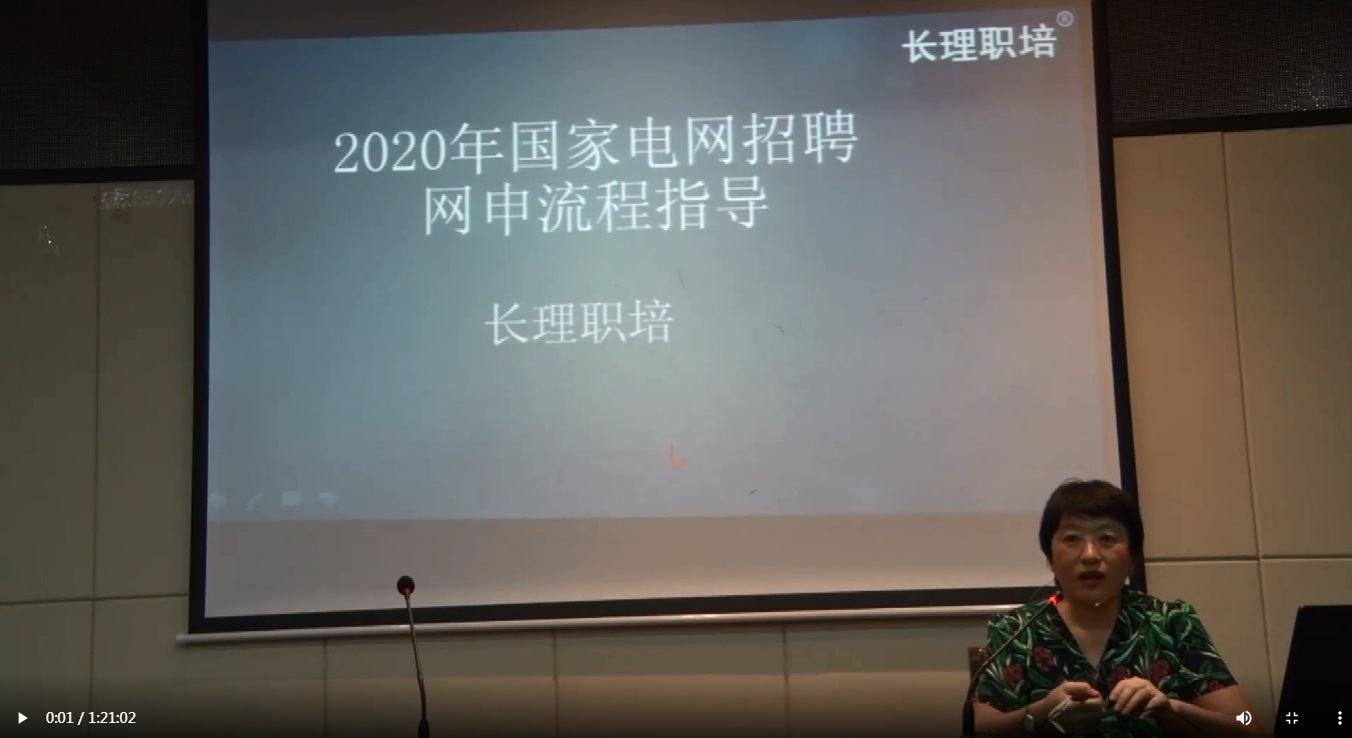
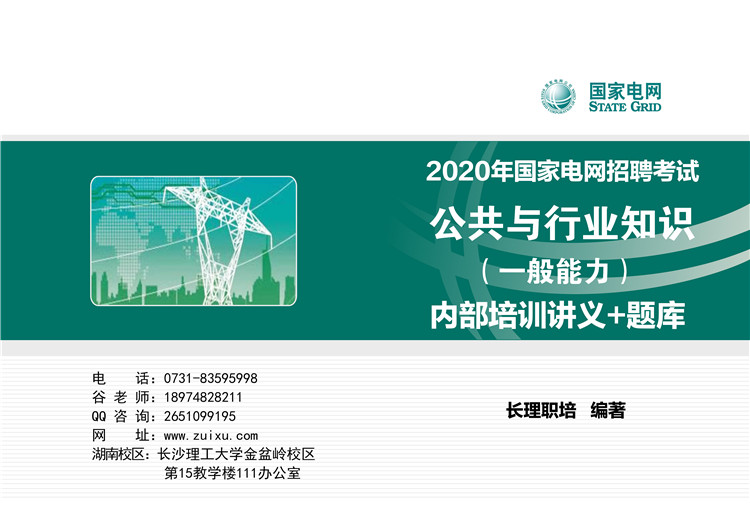
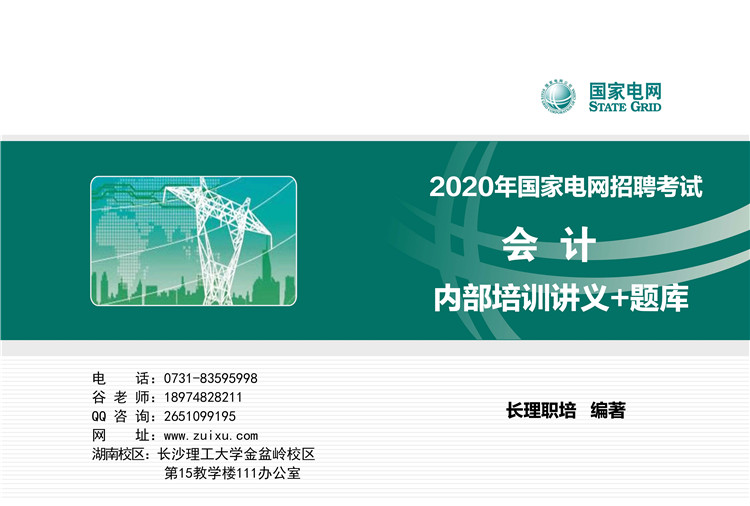
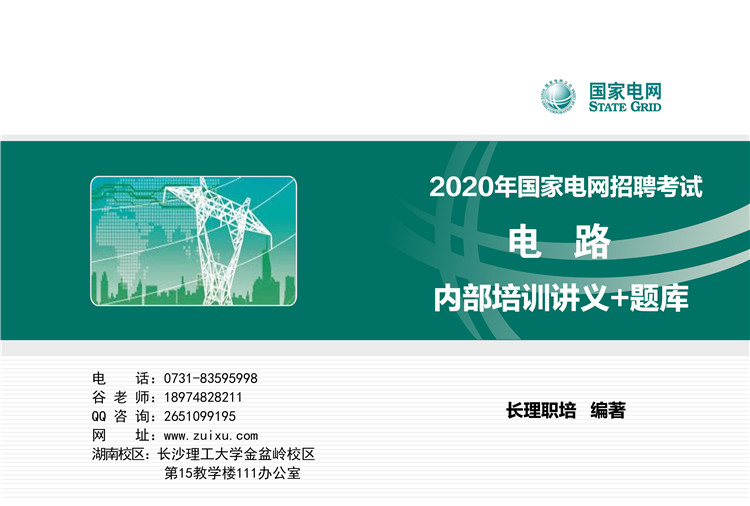
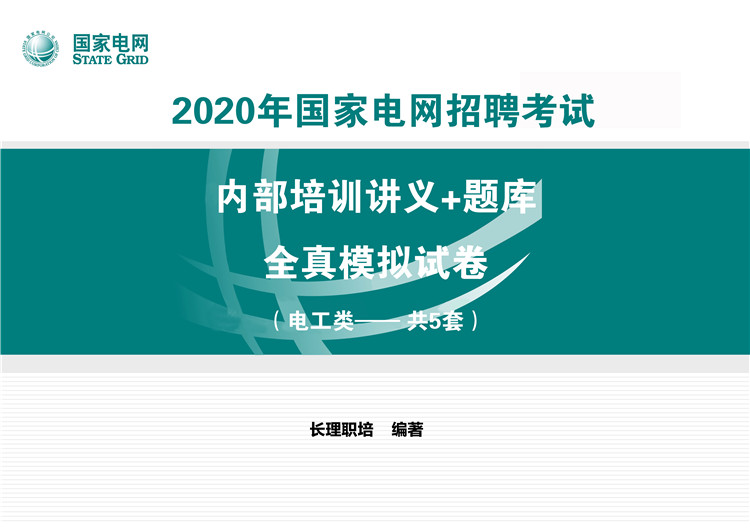
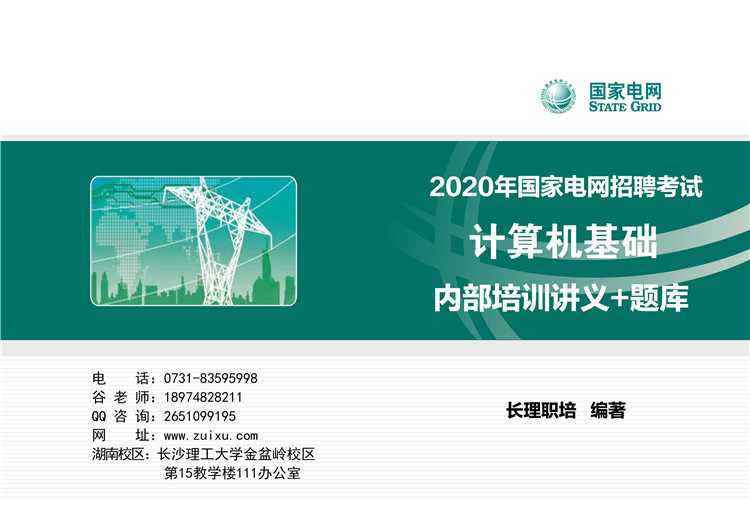

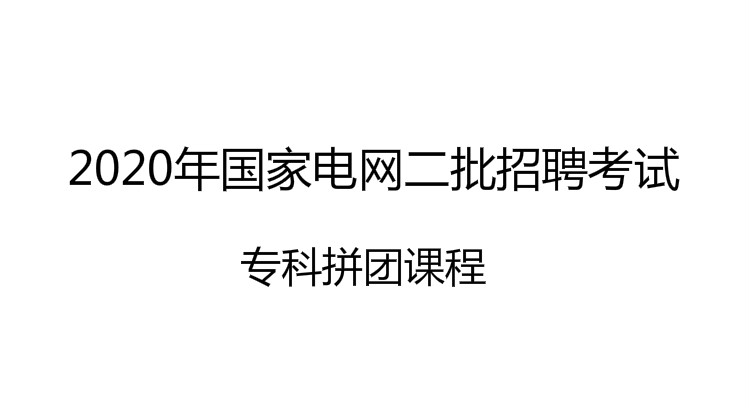
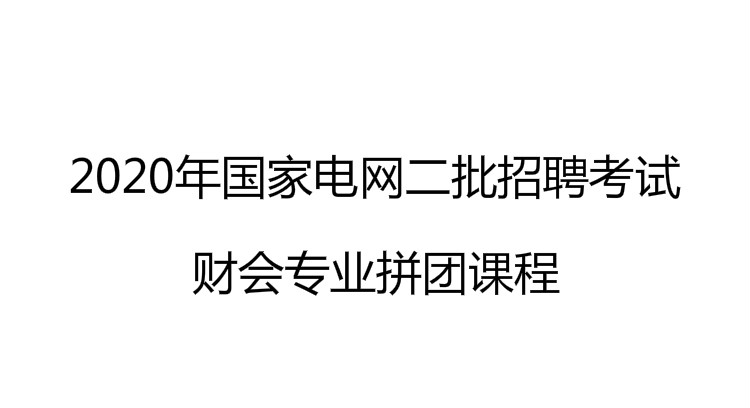
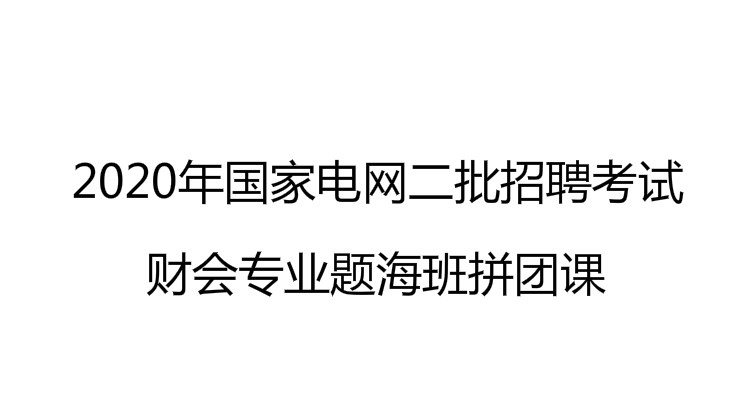
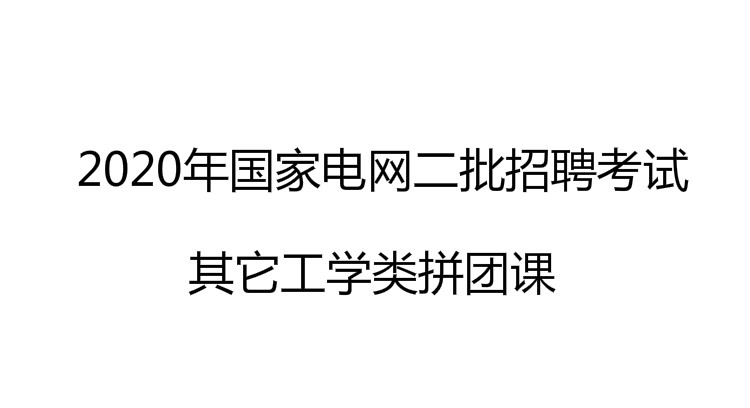
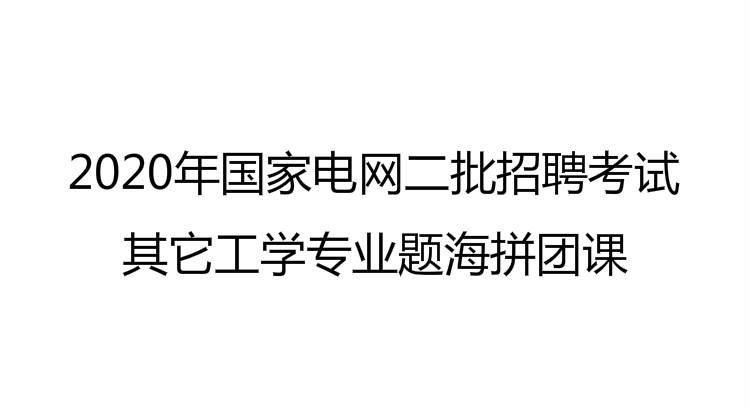


点击加载更多评论>>